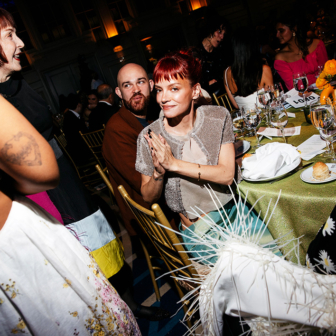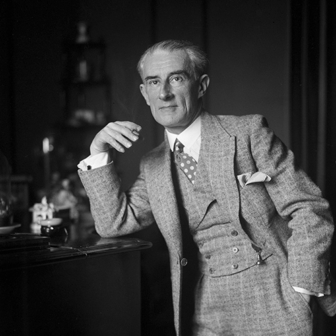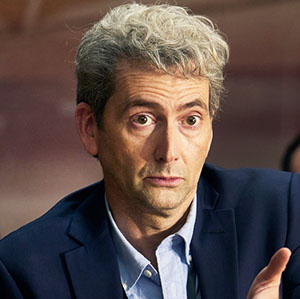In the years before rock & roll, Johnnie Ray was a popular singer whose habit it was to sob on the job. In 1952, four years before Elvis Presley sang “Heartbreak Hotel,” Ray was method acting his way through “Cry,” pulling at his hair, falling to his knees and weeping real tears, all while notching up two million sales. “Poor old Johnnie Ray / Sounded sad upon the radio,” Kevin Rowland of Dexys Midnight Runners sang thirty years later.
Dexys were a band from the English midlands pretending to be Irish (Rowland’s parents really were Irish), and “Come On Eileen,” replete with fiddle, banjo, tin whistle, accordion and lots of “toora loo rye ay,” took them to number one in Britain, the United States, Australia and half a dozen other countries. Although they were somewhat more than one-hit wonders (their version of Van Morrison’s “Jacky Wilson Said” reinforced the impression they might be from Ireland), it is “Come On Eileen” for which they are best remembered, and that’s partly because it’s one of those earworms. In spite of its odd structure, its abrupt and unpredictable changes of tempo and key, the song lodges in the memory.
When Kristen Dunphy, creator of the eight-part ABC television drama Wakefield, was casting around for a tune to put in the head of her central character, Nik Katira (Rudi Dharmalingam), she googled “earworm” and up popped “Come On Eileen.” It was the perfect song, not only because of its references to the act of listening, the power of music and Johnnie Ray’s emotional vulnerability, nor even for Rowland’s oddly prescient line at the end of the second verse, “I’ll hum this tune forever!” No, it was perfect because, being an authentic earworm, it stuck in the audience’s head, too. As viewers of this series, we find ourselves participating in a unique manner; Nik’s problem becomes ours, following us into the shower, on to the bus, into our workplaces.
Nik’s workplace is a psychiatric hospital at the top of a cliff in the Blue Mountains of New South Wales, where he is a nurse. The “song stickage” (a real term) that he experiences is more than just an irritation; it also represents a repressed childhood memory. As Wakefield moves from episode to episode, we learn about the lives of its characters — the doctors and nurses, the patients (the new mother, the businessman, the musician) — but the source of Nik’s trauma remains hidden until the last episode, hinted at by the persistence of “Come On Eileen” and the sound of tap shoes. In his childhood, we learn, Nik was a tap dancer, and these taps are almost as recurrent a feature of the soundtrack as the infernal earworm.
Wakefield’s composers are Caitlin Yeo and Maria Alfonsine, the latter attached to the project from the outset. Unusually for TV drama, Alfonsine was in some of the early planning meetings, and a good thing too, because this is not the sort of show for which a composer can be brought in late in the piece and given the job of making the sad bits sadder and the funny bits funnier. Music is central to the story.
The Dexys song is put through endless variations. It is strummed on a guitar by one of Nik’s patients, turns up as a gospel number and, in an already famous scene at the end of the first episode, becomes a tap routine on a station platform performed by a chorus line of waiting passengers. But away from these set pieces, it is the fragmentation of the song — and of the sound of tap shoes — that insinuates itself into the drama most effectively.
Yeo and Alfonsine have provided Wakefield with plenty of conventional music to establish mood and underline character — conventional, that is, in the way it’s used — and I’m told a soundtrack album is under consideration. This would mean that music like the evocative opening theme, which brings together a viola and the voice of Hindustani singer Rucha Lange, will have an existence separate from the TV series. And so it should. In the context of the show, the music suggests both Nik’s fragile state of mind and his Indian family background. But without the pictures, it’s free to mean whatever the listener wants it to mean.
Still, it’s the music in Wakefield that probably won’t make it on to a soundtrack album that is the most remarkable. The composers isolated tiny melodic cells in the Dexys song and wove them into new musical strands, but tellingly, these fragments are also allowed to stand on their own. Some of the musical cues in Wakefield are one or two seconds long; some are at the threshold of audibility. Was that music? Was that “Come On Eileen” that just flashed by? Was that a tap shoe? The effect is sometimes comic, sometimes unsettling, often both, and at moments such as these it is impossible to separate the composers’ work from that of the sound designer, Sam Petty, and sound editor, Abigail Sie. But then that’s frequently true of music in film and television when it’s used well.
Music is the key both to Wakefield’s mystery and to the telling of its story, and it also provides a quietly satisfying ending. Onscreen, songs are frequently called upon to do the work of a lazy scriptwriter, telling us what to think, what to feel. Not here. For one thing, the scripts (by Dunphy, Sam Meikle, Cathy Strickland and Joan Sauers) need no saving. For another, because musical fragmentation has brought us to the climax of the story, only a complete song will round it out.
So in the final scene, the music, no longer in our heads or on the soundtrack, comes out of the mouth of one of the main characters, Kareena (Geraldine Hakewill), who sings Measure’s “Begin Again.” And because she isn’t miming, but really singing, it’s possible to have her start the song unaccompanied, giving it an air of magical spontaneity. The song’s phrases, connected in the original version by keyboard fills, are now separated by silences. Kareena/Hakewill sings as a mother might sing at her child’s bedside. And when, at length, a keyboard arrives to help her join the dots of her vocal line, something yet more magical occurs. The actor looks up, turns to the camera and sings to us. It’s Wakefield’s final moment of audience participation, dispelling, as it were, the earworm and silencing the tap shoes. •




